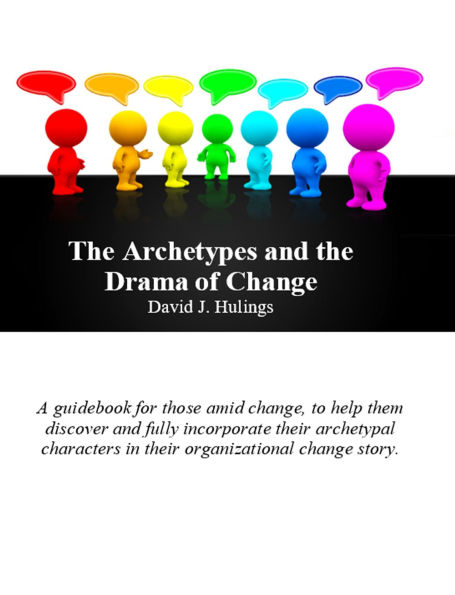Any change in a person's life or an organization is a story. And, of course, like a story, there must be characters-actors. Some actors in the story of change are heroes. Some are villains. Some are key actors and have powerful and influential roles in the change narrative. Others have bit roles; they seem insignificant and less important. Each person in the change dialogue, however, will tell the story over and over. Generations later will give an account of "remember when we had to change that." Sometimes the story is a good story. Often it is a bad story. This book is a guidebook, a script, to help assure we have more purposeful actors creating more positive stories of change. Those successful stories would replace what we often hear-negative narratives of failed and incomplete ventures.
Simply stated, these negative narratives are seldom pretty. Those telling the story will tell their version of the events. They will speak of everyone's part and how so and so tried to roadblock the change. They will speak of the fellow who tried to change everyone's attitude. They will tell the story of the character who tried to legislate the change and almost created an insurrection. They will speak of all the roles. They will seldom speak of their own role, however. Depending on how the change unfolded, they may pretend to be in the audience of change, simply watching and evaluating each act in the drama of change. But everyone knows they had a role as well. This book is a guidebook to identify the roles... everyone's role. Those roles can be characterized as archetypes. This book is a guidebook to identify the archetypal roles that are played and must be played during the change process.
1128086726
Simply stated, these negative narratives are seldom pretty. Those telling the story will tell their version of the events. They will speak of everyone's part and how so and so tried to roadblock the change. They will speak of the fellow who tried to change everyone's attitude. They will tell the story of the character who tried to legislate the change and almost created an insurrection. They will speak of all the roles. They will seldom speak of their own role, however. Depending on how the change unfolded, they may pretend to be in the audience of change, simply watching and evaluating each act in the drama of change. But everyone knows they had a role as well. This book is a guidebook to identify the roles... everyone's role. Those roles can be characterized as archetypes. This book is a guidebook to identify the archetypal roles that are played and must be played during the change process.
The Archetypes and the Drama of Change
Any change in a person's life or an organization is a story. And, of course, like a story, there must be characters-actors. Some actors in the story of change are heroes. Some are villains. Some are key actors and have powerful and influential roles in the change narrative. Others have bit roles; they seem insignificant and less important. Each person in the change dialogue, however, will tell the story over and over. Generations later will give an account of "remember when we had to change that." Sometimes the story is a good story. Often it is a bad story. This book is a guidebook, a script, to help assure we have more purposeful actors creating more positive stories of change. Those successful stories would replace what we often hear-negative narratives of failed and incomplete ventures.
Simply stated, these negative narratives are seldom pretty. Those telling the story will tell their version of the events. They will speak of everyone's part and how so and so tried to roadblock the change. They will speak of the fellow who tried to change everyone's attitude. They will tell the story of the character who tried to legislate the change and almost created an insurrection. They will speak of all the roles. They will seldom speak of their own role, however. Depending on how the change unfolded, they may pretend to be in the audience of change, simply watching and evaluating each act in the drama of change. But everyone knows they had a role as well. This book is a guidebook to identify the roles... everyone's role. Those roles can be characterized as archetypes. This book is a guidebook to identify the archetypal roles that are played and must be played during the change process.
Simply stated, these negative narratives are seldom pretty. Those telling the story will tell their version of the events. They will speak of everyone's part and how so and so tried to roadblock the change. They will speak of the fellow who tried to change everyone's attitude. They will tell the story of the character who tried to legislate the change and almost created an insurrection. They will speak of all the roles. They will seldom speak of their own role, however. Depending on how the change unfolded, they may pretend to be in the audience of change, simply watching and evaluating each act in the drama of change. But everyone knows they had a role as well. This book is a guidebook to identify the roles... everyone's role. Those roles can be characterized as archetypes. This book is a guidebook to identify the archetypal roles that are played and must be played during the change process.
7.99
In Stock
5
1

The Archetypes and the Drama of Change

The Archetypes and the Drama of Change
Related collections and offers
7.99
In Stock

Product Details
| BN ID: | 2940184433998 |
|---|---|
| Publisher: | Amazon Book Marketing Pros |
| Publication date: | 01/02/2025 |
| Sold by: | Barnes & Noble |
| Format: | eBook |
| File size: | 4 MB |
About the Author
From the B&N Reads Blog
